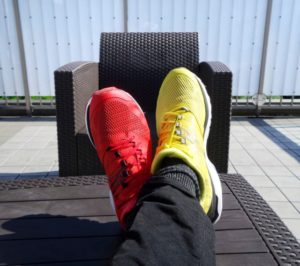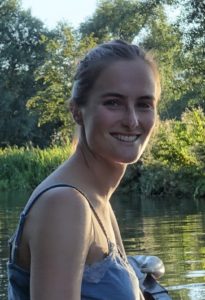Exeter Collaboration for Academic Primary Care (APEx) Blog
Exeter Collaboration for Academic Primary Care (APEx) Blog
Posted by Mark
28 September 2021Thinking of combining academic and clinical roles? In this latest APEx blog Academic Clinical Fellow Dr Emily Brown reflects on the benefits and challenges of dual roles.

Photo by Possessed Photography on Unsplash
My academic and clinical roles
As an academic GP trainee, I spend half my week working clinically in general practice and the other half working in research as an Academic Clinical Fellow. This journey started with an undergraduate degree in biochemistry, giving me a strong grounding in basic science and scientific methods. I then reached a fork in the road, applying for both PhDs and medical school. I took the latter path, but my interest in science and evidence-based medicine remained strong. After qualification as a medical doctor, I followed the integrated academic and clinical training route, allowing me to formally combine these roles. This has led to a hugely varied and rewarding job. It is not without challenges, but it is worth it!
Benefits of my dual role
I love working clinically in general practice and it is a privilege to work with patients in this context. Nevertheless, I have always had a desire to understand ‘why’ (which I think drove my parents mad!) and I fundamentally believe in evidence-based practice and striving to broaden our understanding of medicine. A career in academic general practice lets me combine these two worlds. It also affords the opportunity to have a broader impact on healthcare, potentially changing the way care is delivered.
I enjoy the diversity of the job. Some days I will be working in a busy general practice, with all the variety and challenge that brings; from reviewing newborns to caring for those who have reached their 90s – and everyone in between. My academic job is equalled varied. I’m involved in research projects relating to shared decision-making in general practice and also antimicrobial resistance in Malawi. The research opportunities in academic primary care are very broad, ranging from disease-specific research to health service delivery to epidemiology. The research is cross-disciplinary, working with and learning from non-clinical colleagues, as well as clinicians in other specialities. I’m also completing a masters in epidemiology, equipping me with skills to hopefully take forwards into a PhD. My academic role has allowed me to publish in peer reviewed journals, present at conferences and teach at the medical school. I have a strong interest in global health and have taken on some related voluntary roles, sitting on the RCGP Junior International Committee and acting as a grant reviewer for MicroResearch, an organisation funding and developing community health research in Africa. Combining roles means I’m rarely bored! The dual training is good for wellbeing; stepping between roles allows you a break from the specific pressures of each role.

My clinical and academic roles are brilliantly complementary, enabling a unique perspective, with an appreciation of both the clinician point of view and the research outlook. This is helpful in generating research ideas – working clinically day to day and interacting with clinicians and patients helps develop understanding of what the important research questions are. For example, I have a particular interest in antimicrobial resistance and antibiotic prescribing. Whilst I can understand the science relating to the transmission and drivers of resistance and recognise the impact that over-prescribing antibiotics has on this, I can also appreciate the real-world challenges of antibiotic prescribing in primary care – including time pressures and clinical uncertainty. This dual perspective helps me to identify interventions that may be of benefit in optimising antibiotic use. I have used this to inform my recent publication on the role of primary care in antimicrobial stewardship (Brown E, 2021.).
The challenges
The combined clinical and research training pathway is not without challenges. Both roles are busy, and may often expand beyond their ‘half’ of the time allocation. There may be exams in both roles, which require extra commitment. The need to wear multiple ‘hats’ and freely switch between your ‘GP hat’ and your ‘research hat’ can add an additional complexity. Trying to develop two careers in tandem can sometimes lead to feeling ‘behind’ both your purely clinical and purely academic colleagues. However, the journey is a very enjoyable one, so it’s worth it. The combined training programme also means trying to engineer and integrate two distinct careers and sometimes fitting the pieces of the jigsaw together can be a challenge, although there are plenty of options out there to help make this work.

Emily Brown, ST4 ACF and GP trainee
An eye to the future
I’m coming towards the end of my academic GP training programme now. Looking to the future, I hope to continue to combine clinical and academic work, working both as a GP and applying for PhD positions. It’s a privilege to work in these complementary and varied roles and I would wholeheartedly recommend taking this route!